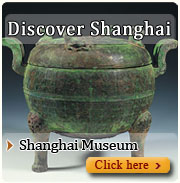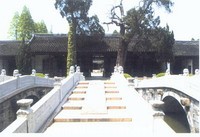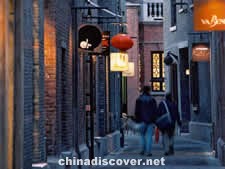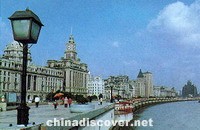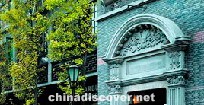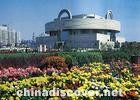Shanghai
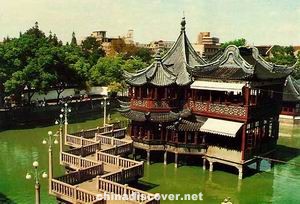
-
City Name:Shanghai (Chinese: 上海)
-
Population :Municipality 19,213,200
-
Location :31°12′0″N 121°30′0″E on China's central eastern coast
-
Overview:Originally a fishing and textiles town, Shanghai grew to importance in the 19th century due to its favorable port location and as one of the cities opened to foreign trade by the 1842 Treaty of Nanking.
Overview
When Shanghai first began from its humble beginnings, it was far from obvious that the world one day hear its roar. Since then, Shanghai has seen dramatic chages, spinning between the far extremes of Fortune's wheel.
The financial go -go capital of China, Shanghai, which means "go to the sea" in Chinese, is a city of 16 million remembers its hallucinating history. Divided in half by the Huangpu River INTO Puxi(west of the Huangpu) and Pudong(east of the Huangpu), Shanghai's story is one of millions made and mirages lost. Pried open by British guns in the First Opium War, this once sleepy fishing and weaving village gained notoriety as the "Paris of the East" as a colonial city of commerce, vice, money and political intrigue. More recently, Shanghai has benefited the most from China's economic reforms, rapidly rising as the shining "Pearl of the Orient."
Know More
Earliest regional settlement dates back to 5900 B.C, Shanghai became a key cotton exporter under the Song dynasty. The silting of the Wusong River shifted the regional capital to Shanghai in the 13th century. Growing richer, the town needed to defend itself against marauding Japanese pirates. A 6km long wall with six gates and 20 arrow towers was erected in 1553 dring the Ming dynasty, Although meteoric development would later engulf this area, it continues to stand as the Old Chinese City. To increase to sell silk and tea. Its population swelled to 50,000, giving birth to many noted Chinese scholars. One particularly important personage was Xu Guangqi, friend and pupil of the Jesuit missionary and early Western explorer, Matteo Ricci.
Leading up to teh colonial period, silk, porcelain and tea was all the rage in Britain and China would only trade it for gold. A massive trade deficit built up and British sought a product they could seel to the Chinese in order to restore the balance of trade. Seizing on Opium, produced cheaply in colonial India, Britain entered the China market with narcotics.
When China finally moved to stop the importation of opium, it was too late. The result of the First Opium War was the 1842 Treaty of Nanjing, first of the many "Unequal Treaties." The treaty granted the opening of five ports: Shanghai, Ningbo, Fuzhou, Xiamen and Guangzhou.
Arriving by rafts on the Suzhou Creek, opportunistic businessmen seized the chance to fleece naive peasants. The wealthy purchased large tracts of land and erected tenement housing overnight. They rented these tiny rooms to displaced farmers at grossly inflated rates, thus began the birth of urban Shanghai.
Trade, with opium at the helm, drew some of the world's largest trading house. Clippers and steamers began to clog the Huangpu River's sprawling port. It would be a tough market for the British to hold onto as more traders moved in, marking Shanghai a truly international city.
The 1863 fomation of the Municipal Council gave Britain, France and America a free hand in administrating and governing Shanghai. That same year, America and Britain solidified their partnership by the formation of the International Settlement, jointly ruling with their own brand of colonial law and order. Meanwhile France continued to develop its own concession.
Legal vagaries gave Shanghai a reputation as a city of adventurers. Missionaries, mercenaries, merchants, grafters, gadflies and gangsters of all stripes flocked here. The population increased from 50,000 to a million by 1900, a mushrooming growth rate of 2,000%.
Amidst the chaos of drugs, civil strife and colonialism, the young intellectuals of China began to search for the solutions to China's rampant poverty and subservience to the West. Many looked to Marxism and the victorious Russian Revolution. Several Chinese Marsist groups met in Shanghai and founded the Chinese Communist Party in 1921; amongthem was future CCP Chairman, Mao Zedong.
Following the power vacuum that ensued after the death of revolutionary hero Sun Yat-sen in 1925, Chang Kai-shek stepped into the political fore with secret backing of the Green Gang, Shanghai's powerful underground. Under teh banner of the Ntionalist Party, Chiang began the ambitious Northern Expedition in 1926 to quell the warlords and unite a fractured nation. For the time being, the Nationalists and the Communists cooperated under teh aegis of a united front, wihich would spectacularly rupture in Shanghai.
Though Chiang nominally united China, Japanese imperialism was constant threat. When Japan invaded northeast China in 1931, the Shangainese responde by boycotting Japanese shops and goods. Five years later Japan began a general invasion of China and Imperial Japanese planes and warships bombed Shanghai while European and American ex-pats stood on the roof of their exclusive clubs watching the bombardment.
The 1949 liberation of the city by the CCP marked the beginning of a new era for Shanghai. Deng Xiaoping's sweeping economic of the early 1980's sought to open China and bring wealth back into the nation. With Deng successors continuing his policies of economic development, Shanghai continues to experience massive growth. The City has been propelled so far forward that it doesn't even have the time to look back.
While Beijing grabbed the 2008 Olympics, Shanghai followed suit by picking up the 2010 World Expo with plans to host a Disneyland and Universal Studios Theme Park along with scores of new development schemes. The convergence of capital, limitless self-confidence and the mixing of local and foreign know-how have many wondering if Shanghai will once again become Asia's financial capital. Those who come to this glittering jungle all share a common desire to roll the dice in Asia's new fat city-where opportunities seem limitless.
Must See
Shanghai Oriental Pearl TV Tower, it was completed on Oct. 1, 1994. It is 468 m high, being the highest in Asia and the third highest in the world, only next the TV towers in Toronto in Canada and Moscow in Russia. It stands opposite to the bund on the west bank.
Nanjing Road, Starting from the Bund in the east and ending at the junction of JingAn Temple and Yan'An West Road in the west, Nanjing Road of 5.5 kilometers long passes through the center of Shanghai city across 26 busy streets.
Shanghai Bund, Situated in the central part of Shanghai on the west bank of Huangpu River, is the most prosperous region in Shanghai and is nicknamed as "Shanghai's Wall Street". Facing the wide Huangpu River, the mother river of Shanghai, it is the most magnificent landscape in this Oriental Metropolis.
Acrobats Show, the famous Shanghai Acrobatic Troupe has performed around the globe and is a wonderful night out for visitors to Shanghai. Their movement is art - tightly choreographed and rehearsed endlessly.

